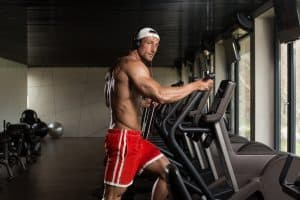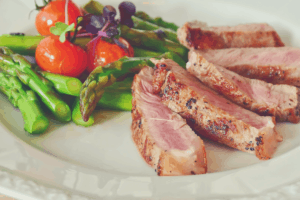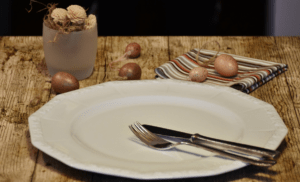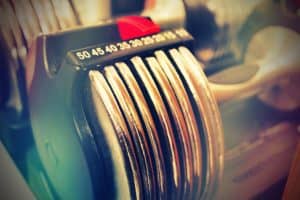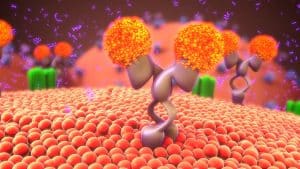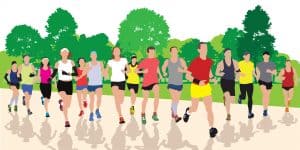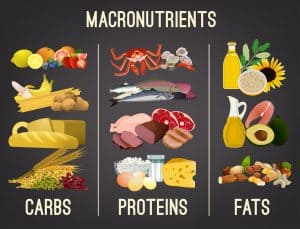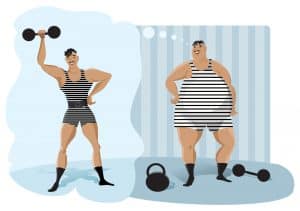Beginner to Intermediate?
Absolutely necessary. Squat correctly, deep, and heavy.
Late intermediate to advanced?
Most likely not.
Do this experiment to find out yourself: Try not to squat for a month or two. Then hop back on the squat rack and do 4-5 sets. You will wake up the next day with very sore legs!
The thing is, every bodybuilder and lifter knows that squat is the crown of all exercises because it strengthens the entire body, not just the legs.
The question of the necessity of squat arises due to (i) having (or risking) injuries or (ii) still recovering from a prior workout.
In any case, I hope the question doesn’t arise because of laziness and not having to train with intensity!
In this post, I’ll show you how to build strong legs without squatting.
But don’t think just because of the absence of the squat, the workout will be easy.
In fact, I would argue that it is even more brutal than the squat.
Why does squat build strong legs?
To answer this question let’s first look at the muscle groups that the squat targets and how the foot positioning prioritizes different groups.
Squat targets the Vastus Lateralis (VL) (outer quad sweep), Vastus Medialis (VM) (teardrop), Adductors (inner thighs), Hamstrings, and Glutes.
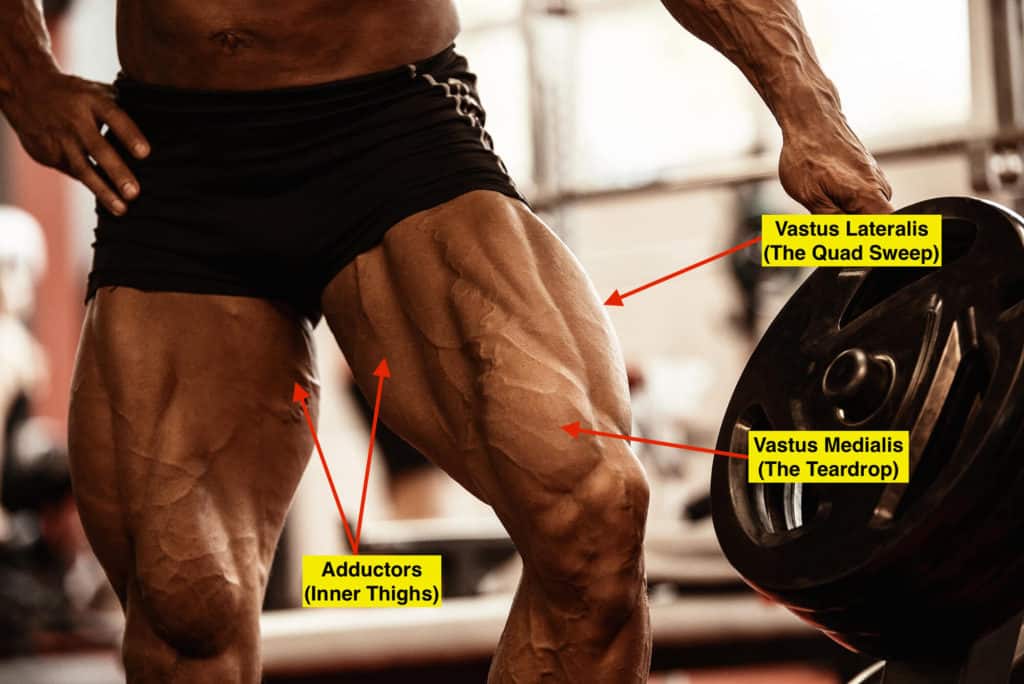
Leg and foot placement plays an important role in targeting each of these muscle groups.
Squatting with a narrow-angle and parallel feet (and the front squat) will target more the Vastus Lateralis (the outer sweep).
Squatting with wide-angle and v-shape feet will target the adductors more, especially when going deep.
Full contraction at the top for both of these movements will target the Vastus Lateralis (VL) or the teardrop, more.
Reverse hack squat or smith-machine squat with the feet positioned slightly in front of the body and hips directly in line with the back, will target the glutes and the hamstrings.
See, you can train the entire legs with only 1 exercise!
Can you name other exercises that do the same function?!
Probably not.
How Frequently Should You Squat?
If you are a beginner, you should attempt to squat once a week. This will allow more time for recovery.
Your goal should be to perfect the form(s), first. Then build confidence and strength from there.
I’m using the plural here because there are many forms for the squat:
(i) The free barbell back squat, both upper and lower (the lower is more for the powerlifters, since it distributes the weight to the back),
(ii) the free barbell front squat,
(iii) the hack squat, and
(iv) the smith machine squat (not recommended for beginners because it places a lot of tension on the knees).
I’d pick the free barbell back squat and master the form with no weights. Then start to add light weights and progressively work my way up.
After a few years of experience under your belt, you could now squat every other week, especially when you are cutting.
Alternate the squat with leg presses, hack squat, or smith machine squat.
Smith machine squat. When the legs are placed in front of the body and the hips are in line with the lower back (as popped to pushed backward), the exercise targets the glutes and the hamstrings.
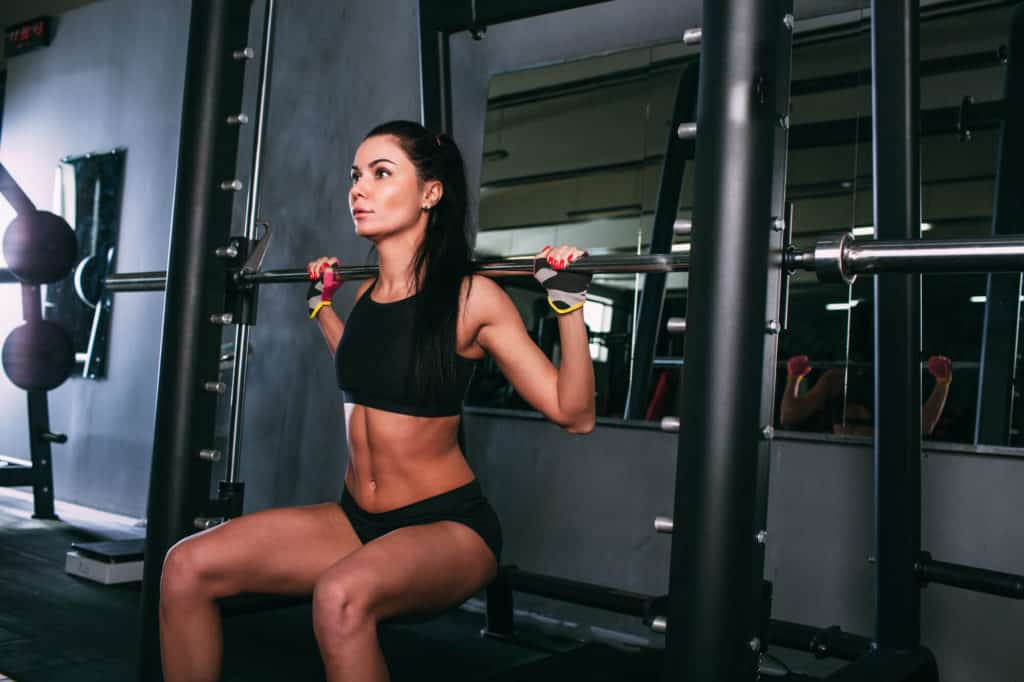
How to build strong legs without squatting?
Now assuming you are an advanced trainer or maybe have, or vulnerable to, injuries in the lower back or knees, there are great options to still grow your legs without squatting.
Here is a routine I’d recommend.
1
Start with the leg extension exercise.
This is a great way to warm up your entire legs and knees. So the next exercise (presses which is an alternative to squat) would feel a lot better mobility-wise.
The intensity in this exercise is key! Do 5 to 6 sets 25 to 12 repetitions with the full range of motion.
For the last two sets, incorporate cluster or drop sets:
Cluster sets: do 10 reps, take 10 seconds rest, then do another 9-8 reps, rest for 10 seconds, and do another 6-5 reps. Make sure that the total number of reps is at least 25.
Drop sets: Do 10-12 reps with the maximum weight you can, drop the weight by 20%, and immediately do another 10-12 reps. Then drop the weight by an additional 20% and do another 10-12 reps.
2
Leg Presses.
Now, this is the pinnacle of the show! So get ready.
Lay down on the leg press machine.
(i) With a regular leg position (slightly less than shoulder-width), press for 15-10 reps.
(ii) Immediately after, change your feet position to wide-angle (more than shoulder-width) and v-shape and press deep for another 15-10 reps.
(ii) Immediately after, change your leg position to narrow-stance and barrel feet and press for another 15-10 reps. Do not let your knees flare apart outward.
This is one giant set!
Do this exercise 5 sets total!
1
Leg press with regular angle (slightly less than shoulder-width) to target the teardrop and, to a lesser extent, the quad sweep.
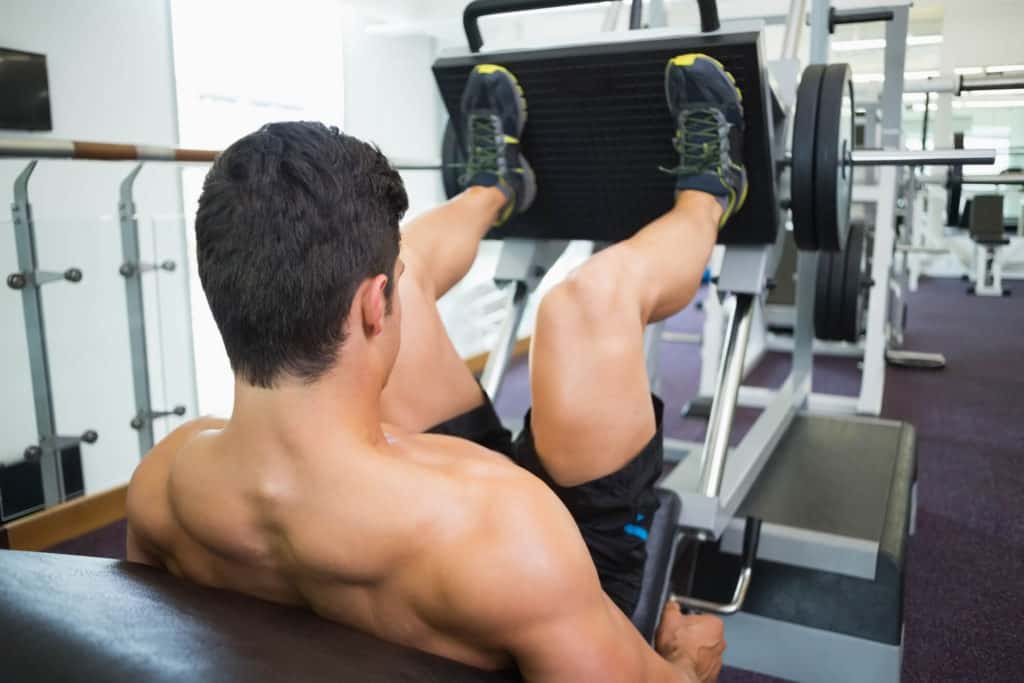
2
Leg press with wide-angle and v-shaped feet position to target the adductors.
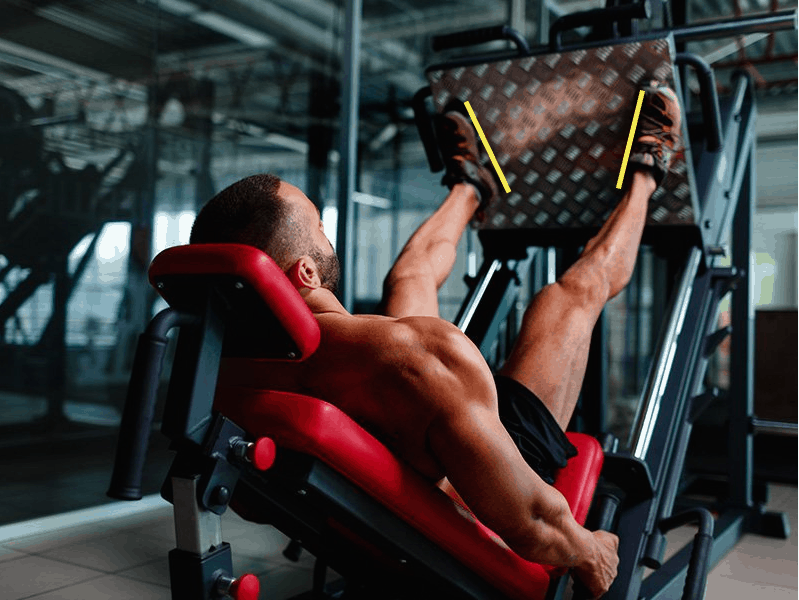
3
Leg press with narrow-angle and parallel feet to target the outer quad sweep and, to a lesser extent, the teardrop.
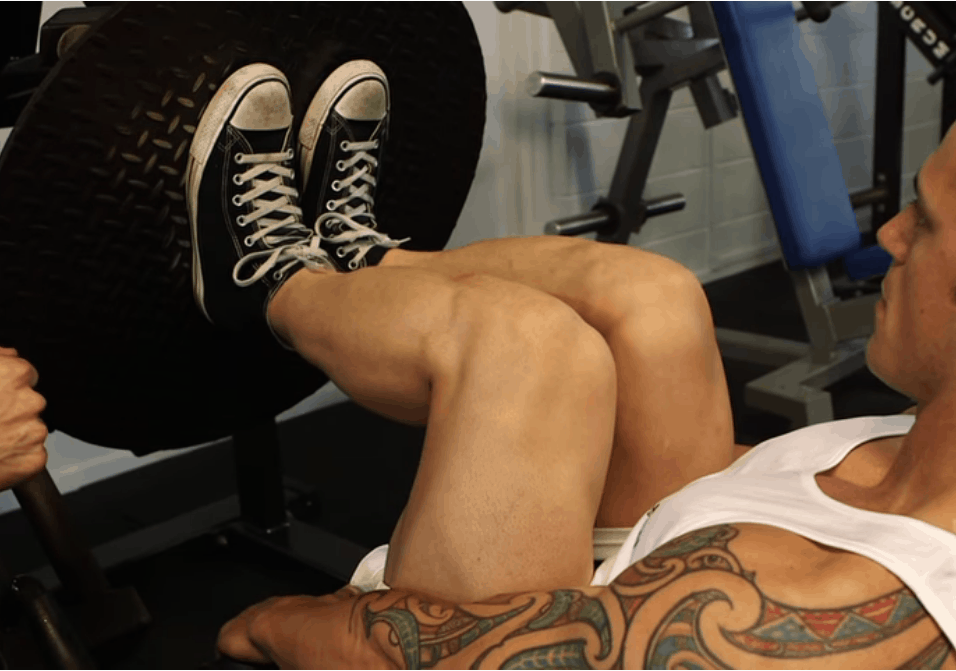
Your legs will scream for mercy.
Or maybe you will even miss the squat!
The idea here is to target the three main leg heads that the squat exercise targets.
The narrow and regular width presses mainly target the teardrop and the quad sweep, respectively.
The wide-angle leg presses mainly target adductors.
It is important to use a weight that enables you to perform 15-10 reps which means not extremely heavy. Because it will place a lot of stress on your knees when performing the narrow-stance presses.
3
Glutes.
Now back to the regular leg workout. Hip thrust or walking lunges are excellent exercises that target the glutes.
We share a lot of information and a variety of glute exercises in this post.
4
Leg curls.
Do 5 sets of 20 to 12 reps.
Pump up the intensity in the last two sets.
For example, you can do
- cluster sets,
- drop sets,
- partials (after say 10 reps of a full range of motion, do another 10 for the lower 1/3rd of the movement), or …
- iso-hold (after 12 reps of a full range of motion, drop the weight by 20% and do another 4-6 reps but hold the weight at the contracting position for 10 seconds).
5
Throw in some calves.
Two exercises of 6 sets with intensity. We share a great deal of how to build bigger calves in this post.
Give this leg workout a shot and it won’t disappoint you.


